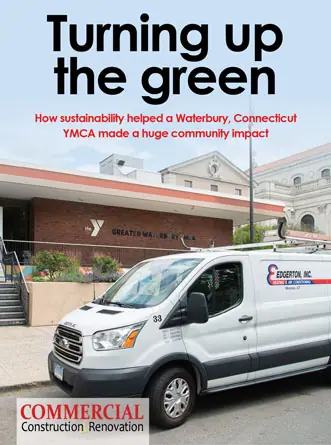Buildings are an essential part of a community. We live, shop, dine or pass them every day. Knowing that they’re supposed to support the people’s daily demands, buildings are made with specific considerations in mind. Plus, a lot of work goes into their planning and construction, especially in relation to a lot of factors (e.g., energy-efficiency, purpose, size, and load-bearing).
Throughout human history, a plethora of designs and trends have emerged that inspired building construction. However, the following are only 7 common types of commercial real estate construction projects.
1. Office Buildings

Office buildings include skyscrapers, executive suites, and co-working spaces. These are designed to meet corporate needs (e.g., 9-5 workday demands, productivity). Hence, they’re fitted with apt facilities, such as bathrooms, lounge areas, parking spaces, and conference halls.
Before the pandemic, there’s been a continuous demand for office buildings to accommodate business growth. But as the Covid-19 lockdown and social distancing protocols continue longer than expected, builders have also refocused their minds about how offices should be built and designed. Besides, remote working has been the preferred way of doing business, making people rethink about the purpose of offices.
2. Restaurants

For many people, eating out means exploring different global cuisines, finding stress-relief, and hanging out with friends. So, to address these needs, restaurant construction needs to be based on a great dining concept and design, as well as on the diners’ psychology and personality. These will all contribute to the pleasant and comfortable ambience of the bistro, which will ultimately improve its profitability.
On top of the essential interior design aspects, restaurants should also meet specific health and food safety guidelines. That means these kinds of establishments should also be equipped with proper food preparation and cooking equipment, storage options, and apt furniture pieces.
3. Medical Facilities

Healthcare is already an evergreen industry. And as the Covid-19 pandemic continues, the sector is now experiencing an influx of demand for curative and preventive healthcare services.
Like other construction projects, building medical facilities requires thorough planning, preparation, and execution. Structures of this type need to pass strict authority standards, such as the following:
- Cost-efficiency
- Safety and Security
- Sustainability
- Flexibility and Scalability
- Sanitation and Cleanliness
- Accessibility
- Ease of Maintenance
- Ambience Conducive to Health
Aside from having condition-specific rooms, medical facilities should also have areas for well-checks, family lounges, dining, consultations, and laboratories.
4. Retail Stores

Malls, retail shops, and grocery stores are also lucrative commercial real estate properties to build. These types of establishments are expected to have high foot traffic. So, it’s best to plan the interior layout well, especially the strategic locations of entry and exit points to ensure a more fluid pedestrian movement.
When building retail stores, it’s important to consider the following factors:
- Competitive Factors (e.g., proximity to other malls, potential foot traffic)
- Strategic Location (e.g., accessibility, proximity to other establishments)
- Target Market
- Capital
- Regulatory and Legal Regulations
- Potential for Expansion
- Additional Facilities (e.g., parking spaces, lounge areas)
5. Accommodation Facilities

The demand for commercial properties that offer accommodation options comes along with the steady growth of the hospitality and tourism industry.
Some accommodation facilities are fitted with just the basic needs of the guests, such as rooms, entertainment areas, and restaurants. But other projects also include more amenities, such as swimming pools, workout areas, and conference halls.
Since the start of the Covid-19 outbreak and lockdowns, more people are now considering remote working. And to accommodate this demand, hotels, motels, and other accommodation options are also integrating co-working spaces fitted with Wi-Fi and other remote working essentials into their buildings. These options can potentially attract guests to stay for a longer time.
6. Industrial Buildings

Although much of shopping and selling these days is done online, buildings are still necessary to house the items for delivery. Plus, production shouldn’t stop even in the midst of the Covid-19 pandemic. Hence, the construction of industrial buildings continues. And these kinds of commercial areas are built based on the following factors:
- Factory Layout
- Space Requirements
- Material Handling
- Lighting, Heating, Air Conditioning, and Ventilation Requirements
- Service Equipment and Facilities
- Nature of the Manufacturing Procedures
- Workplace Health and Safety
7. Sports, Entertainment, and Gaming Facilities

Stadiums and event spaces are also lucrative commercial real estate projects to start. Although booking frequencies might fluctuate based on the season, these structures go well with the tourism, entertainment, and business sectors. These could be booked for corporate events, concerts, and tournaments.
Constructing a sports facility requires careful consideration of different factors. Specifically, builders need to look into turf selection, activities, building regulations, water management, weather safety, parking, and lighting. And most importantly, it’s important to uphold the safety and health of athletes.
Conclusion
Commercial building construction takes a lot of resources to complete. Unlike residential projects, these structures need to pass stricter guidelines of safety, health, and structural stability.
Ultimately, it’s best to contact a project-specific builder if you’re planning to construct one or more of the types above. That way, you can come up with detailed plans for the projects, which should include the materials, completion date, and design among other factors.










 The 2024 virtual Men’s Round Table will be held Q4, 2024, date TBD.
The 2024 virtual Men’s Round Table will be held Q4, 2024, date TBD.












